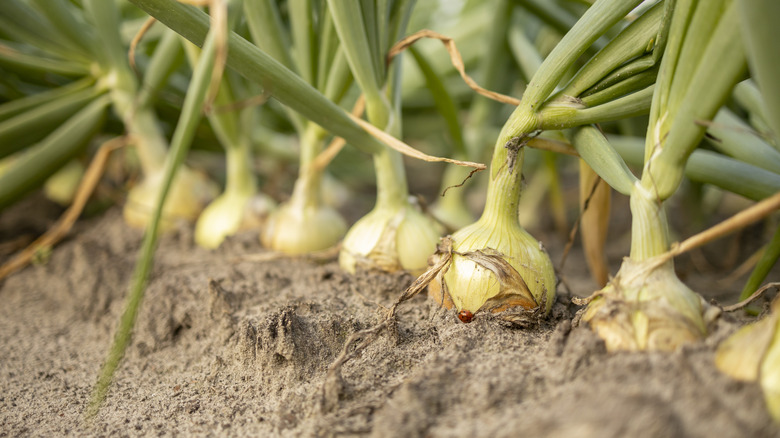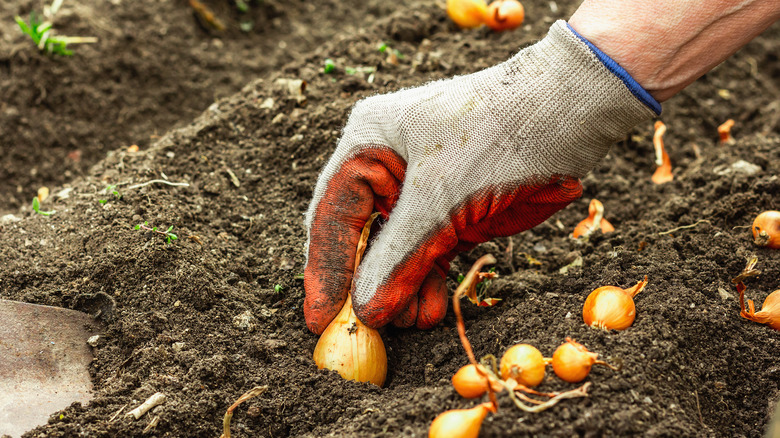Why You Should Be Planting Alliums Now For A Tasty Summer Harvest
The larger plants in the allium family — think onions, garlic, shallots, and leeks — aren't just worth growing as delicious additions to stews, soups, and salad dressings. They're also helpful companion plants you should grow next to tomatoes (and other nightshades), and their pungent odor deters pests. Come the warmer months, if you let them grow a second season, they'll brighten your garden with their cheery flower and seed heads. But for all of this to happen, you need to get them in the ground at just the right time. Alliums need safe exposure to cold snaps, either natural or artificial, to develop the largest possible bulbs, and that time is late summer through early fall.
For example, Martha Stewart writes in The Martha Blog that onions should be planted when the weather cools because "early planting gives the onions time to develop tops and store energy for the bulbs." She goes on to explain the two types of onions: long-day and short-day. The leaves of the former pop up in late spring, the latter in late winter — eventually growing as tall as 3 feet. Garlic should be planted 6 to 8 weeks before the first predicted frost to ensure the seed cloves develop enough roots to survive the cold of winter.
How to plant and harvest alliums
Always source allium starters — dry sets for onions, cloves for garlic and shallots, and seeds or seedlings for leek — from a nursery or garden center, as they have been cultivated to produce large, tasty vegetables. You can certainly try growing fresh onions from old sprouted ones, but the vegetables are likely to be lackluster. To prepare your beds for fall planting, amend your soil with a nitrogen-heavy fertilizer and check the acidity is slighty on the higher side. Choose a part of the garden that will receive full sun come spring, and plant in labeled rows. Alliums, including other popular culinary alliums like shallots and even the pretty ornamental alliums, are biennials treated as annuals, so planting instructions are similar across the group.
Once temperatures drop to 40 degrees F or below, most alliums will go dormant for 4 to 8 weeks. During this time, their energy is concentrated in the bulb, making bigger and, most importantly, tastier, vegetables. Most alliums are ready to harvest when the leaves start to turn yellow, which usually happens around mid to late June in the U.S. Take onions and garlic out of the ground a row at a time; harvest shallots and leeks individually. Onions, garlics, and shallots need up to three weeks after-harvest curing time before storage.

